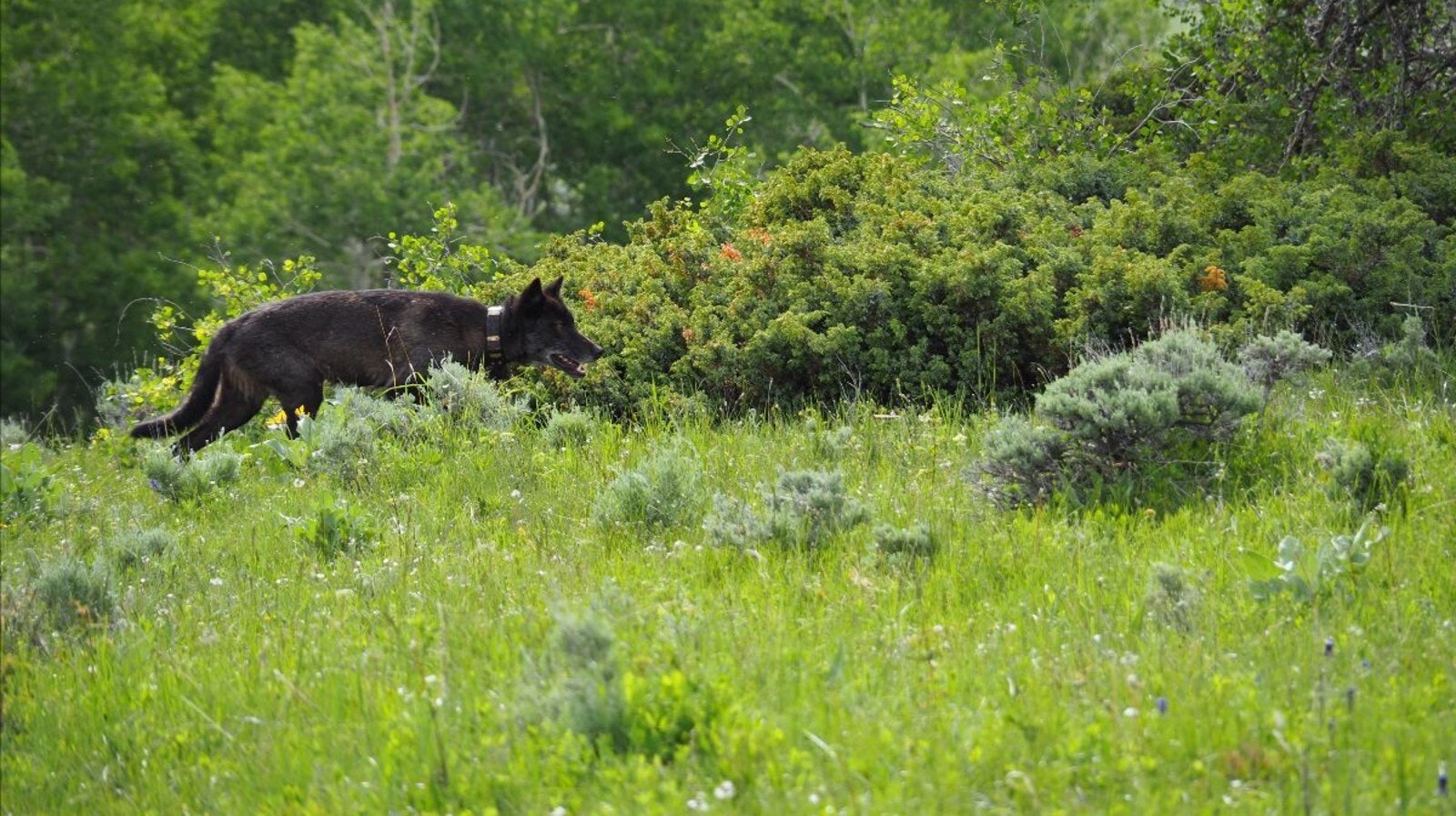For nearly six months, Don Gittleson of Steamboat Springs, Colorado, has had a wolf problem. Which came to him all the way from Wyoming
Gittleson is one of a handful of ranchers who has seen firsthand the destruction wolves can cause to the agriculture industry if left unchecked. He has been fighting to keep a former Wyoming wolf and her pack from killing off his livestock.
“We have a yearling and two bred cows that have been confirmed killed by the wolves,” Gittleson told Cowboy State Daily on Friday. “One cow was injured, but it’s recovering. We have two dead calves that Colorado Parks and Wildlife haven’t yet confirmed were killed by the wolves and I had some CPW folks out today to check out another calf that’s been injured.”
A former member of a Wyoming wolf pack identified as F1084 broke away its pack about two years ago, according to wildlife officials. She, along with her mate and litter, have been preying on the cows since before Christmas.
F1084 and her mate M2101 had six pups in 2021 and when the pack of eight traveled south out of Colorado, it became the first wolf pack in Colorado since the 1940s.
“[Colorado Gov. Jared Polis] thinks they’re just the greatest things ever,” Gittleson said. “The first couple cows they killed, we weren’t even allowed to chase them off or haze them. After three cows and the neighbor’s dog were found dead, they said we could haze them, but it’s a little late for that now.”
Gittleson could not estimate how much he has lost since the wolves began preying on his cows, but some of his livestock can be worth more than $3,500 per animal. It is safe to say he has lost thousands in just the few cows that have been killed, he said.
The wolves cannot be killed or injured due to federal wildlife guidelines. Gray wolves are also considered endangered in Colorado.
Gittleson has been taking certain precautions around his ranch to prevent the wolves from continuing to prey on his cattle, but so far, not much has worked.
He has placed several miles of fladry, brightly colored plastic streamers that are a preventative measure, around his property. He has used cracker shells, which are like shotgun shells that can be fired into the air to shoot sparks and frighten predatory animals.
He, his wife and his employees have even tried staying with the cows at night, when the wolves like to prey on them, to try and scare them off.
While these fixes have worked temporarily, nothing has been a permanent solution.
“The reason most of these tools work is because the wolves are afraid of you doing them harm or killing them,” Gittleson said. “Here in Colorado, that doesn’t happen. We’ve got a governor that goes out and kisses them, so we don’t do anything to make them afraid of people and slowly get them used to us.”
Since his hands are tied, he has to wait until the federal or state government decide livestock producers can take some sort of action over preying wolves, a move that likely won’t happen for at least a year.
“If you look at other states like Wyoming, for example, and look at the difference between what they paid before allowing wolf hunting and after and there’s definitely a difference,” he said. “But I don’t know how soon, if ever, Colorado is going to be hunting wolves.





